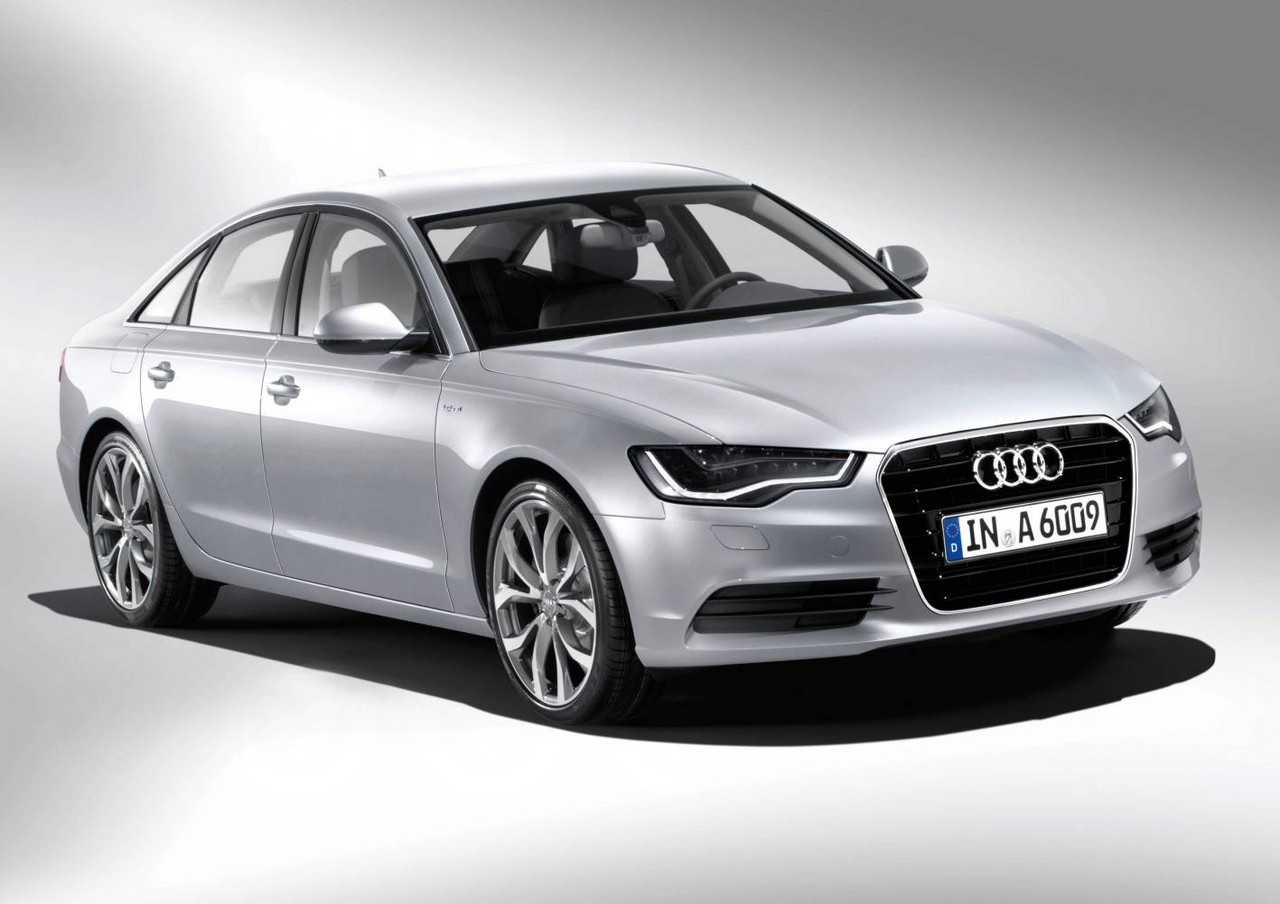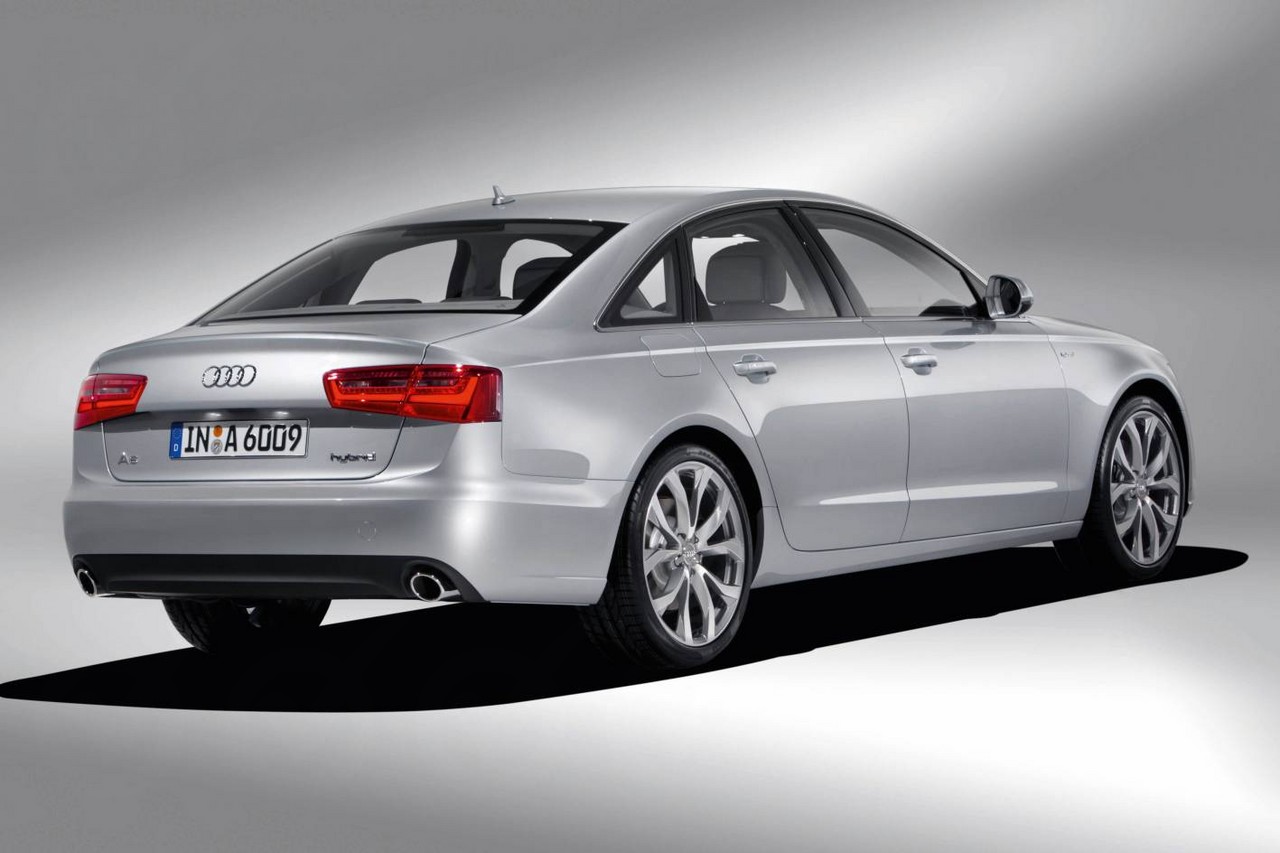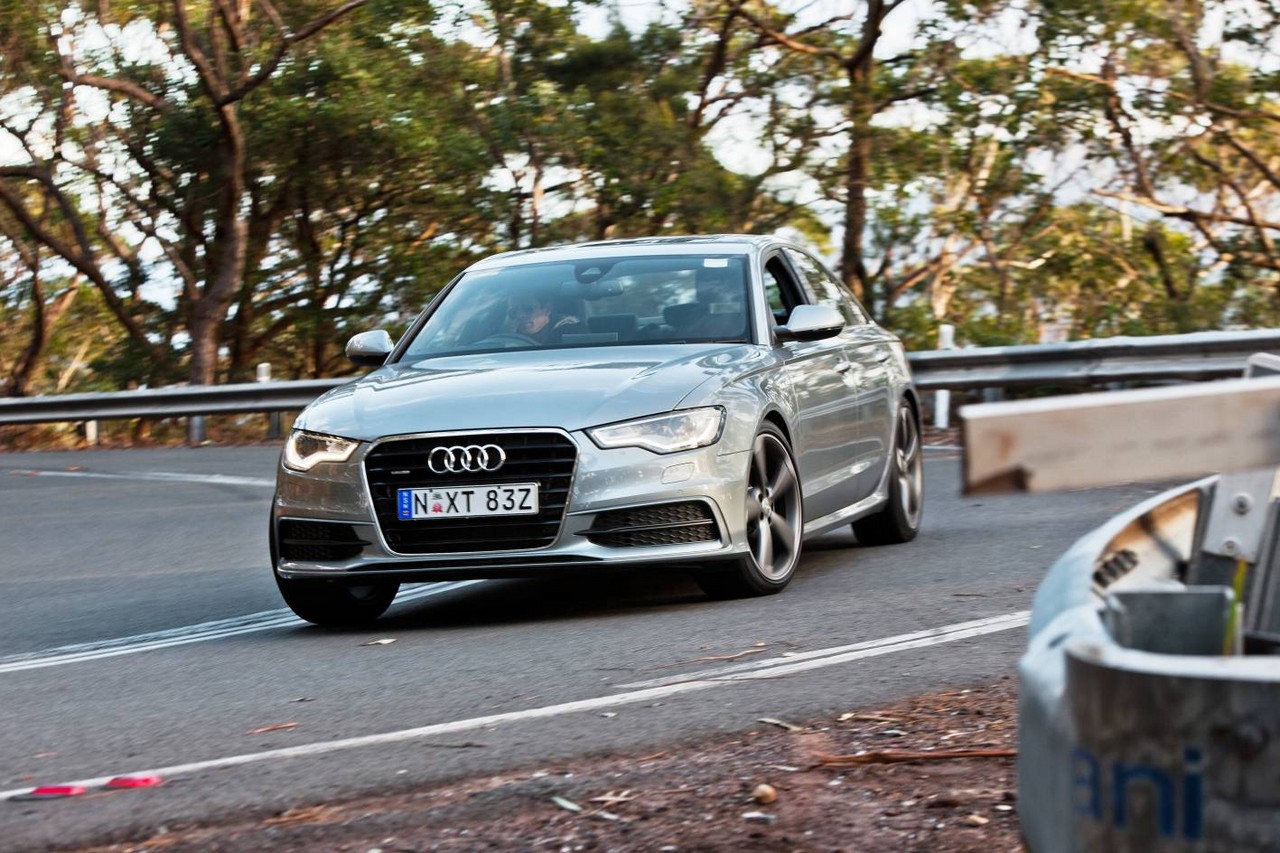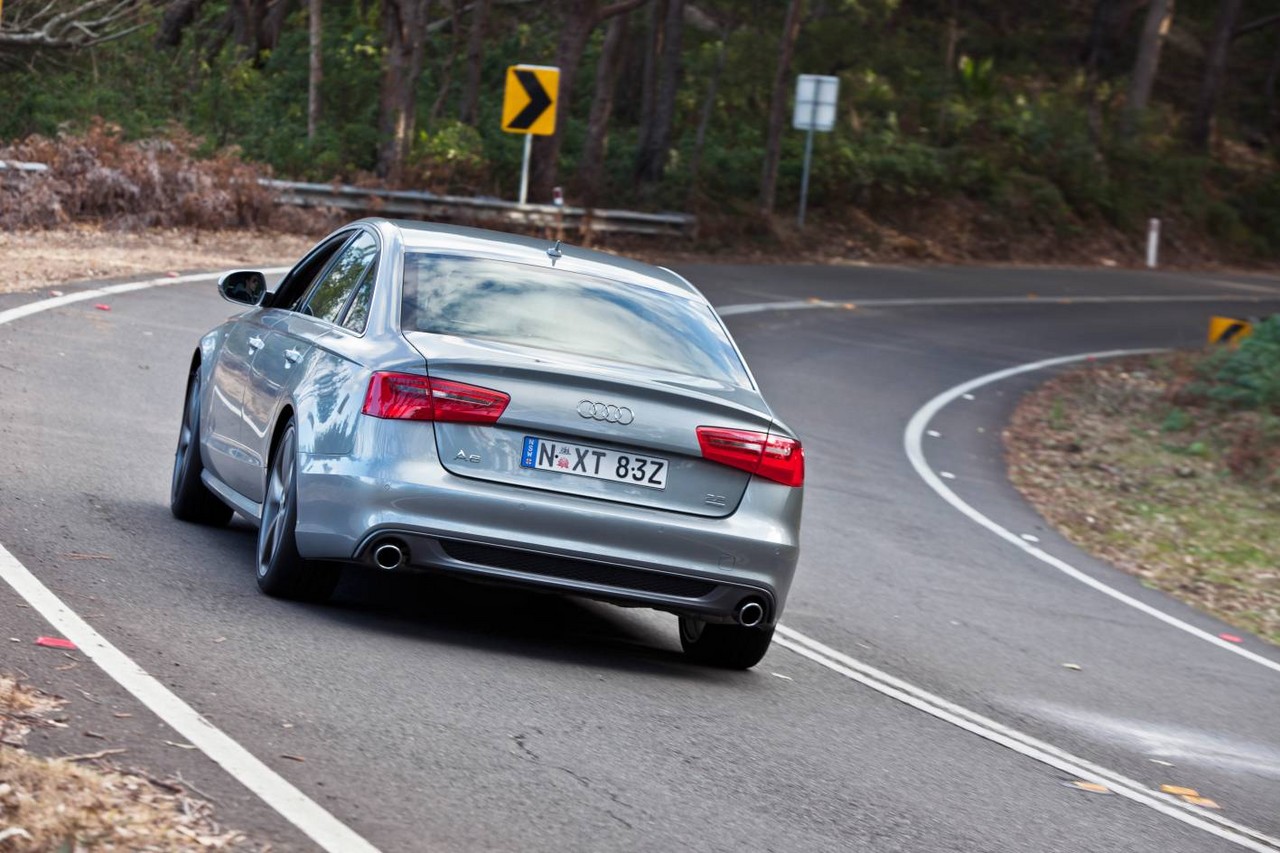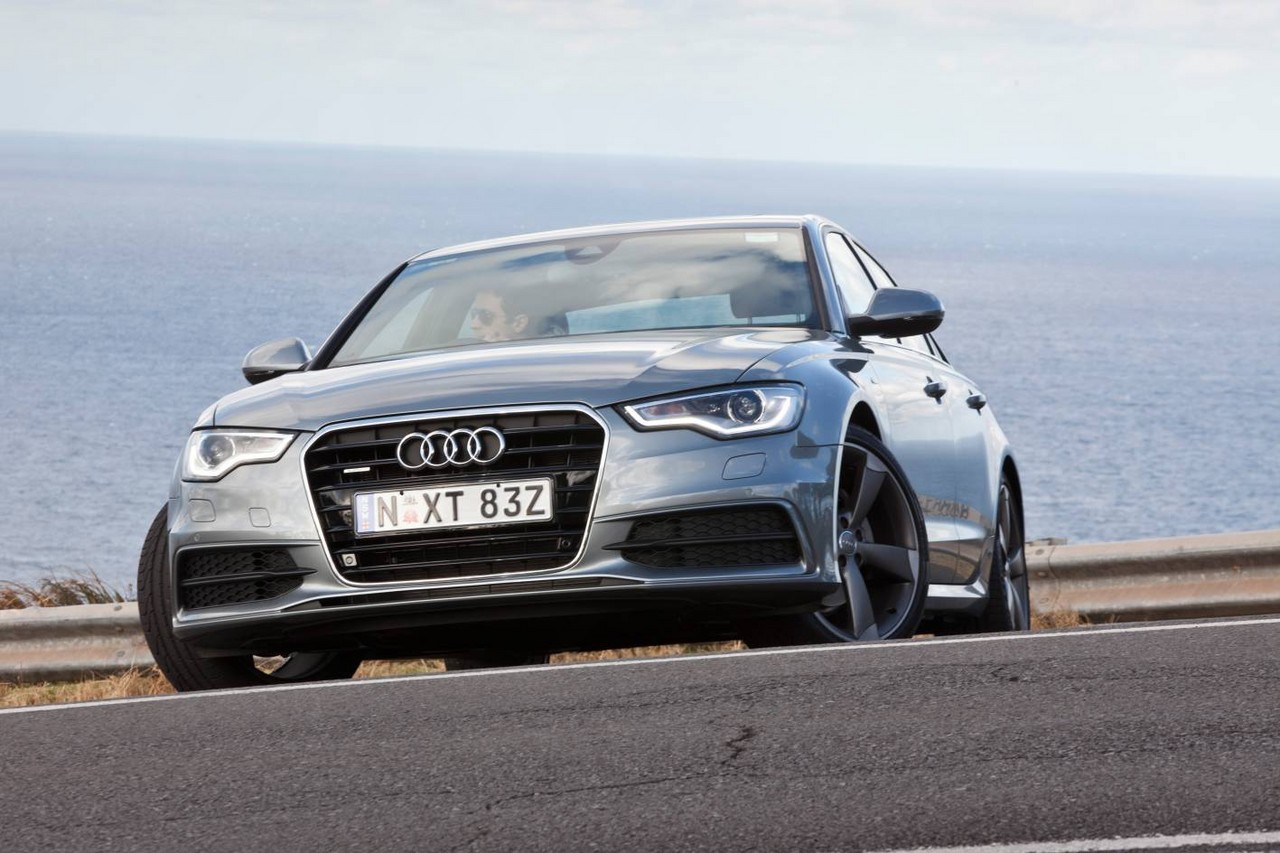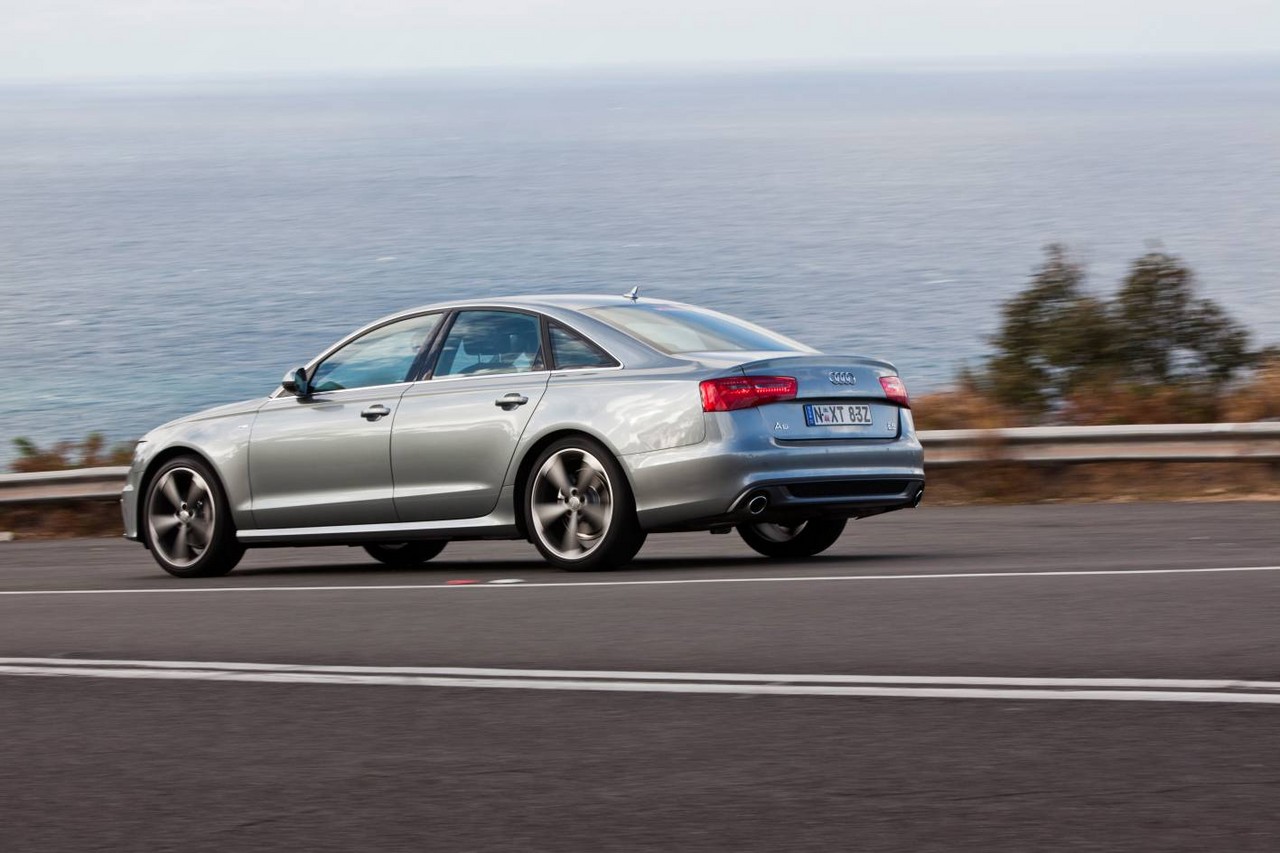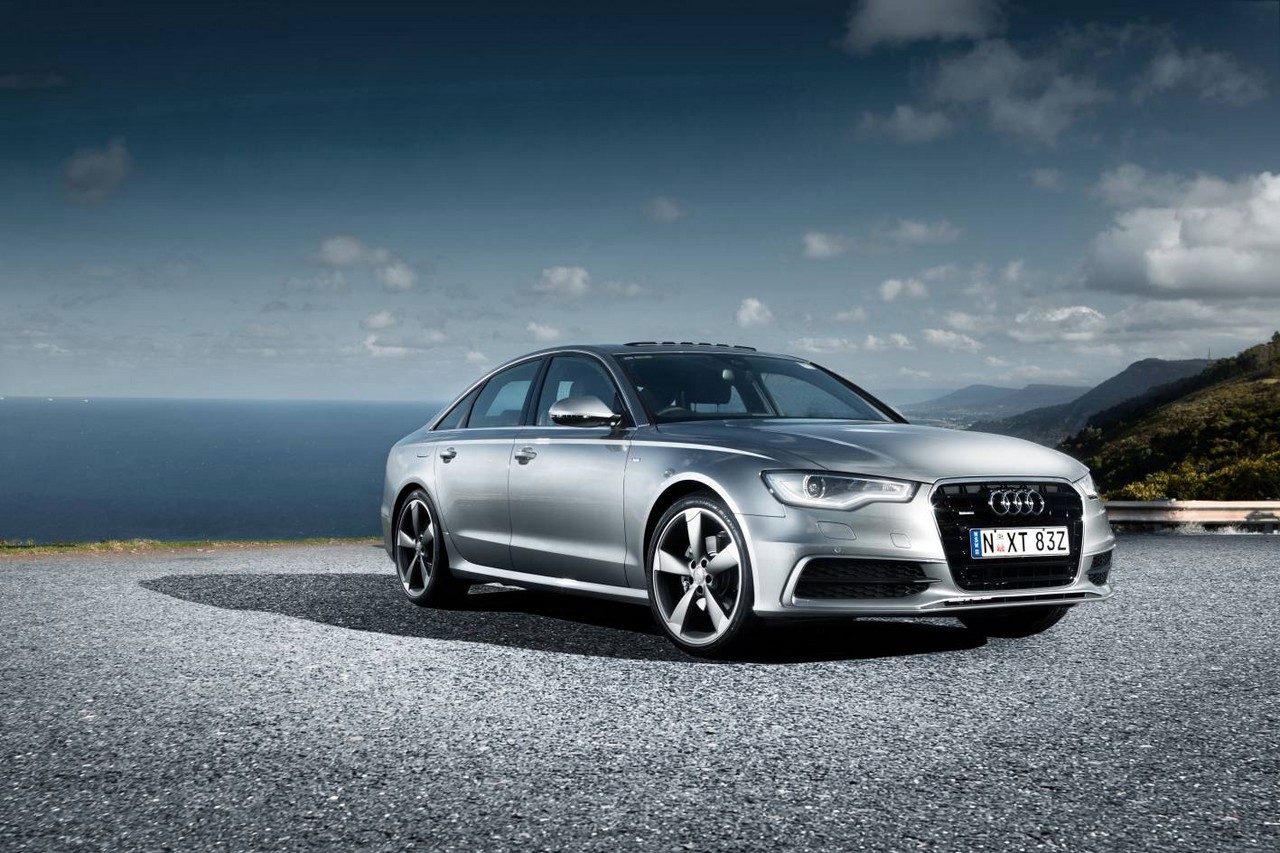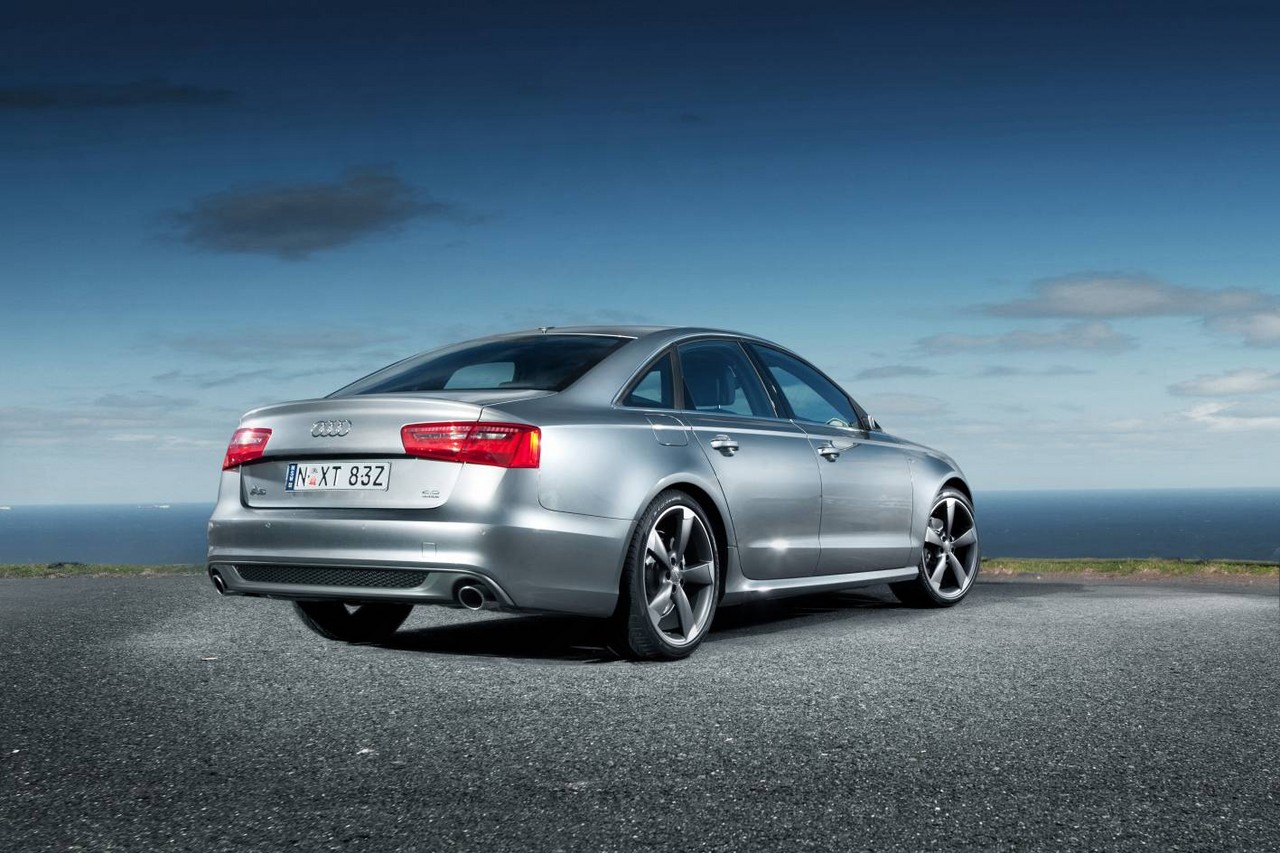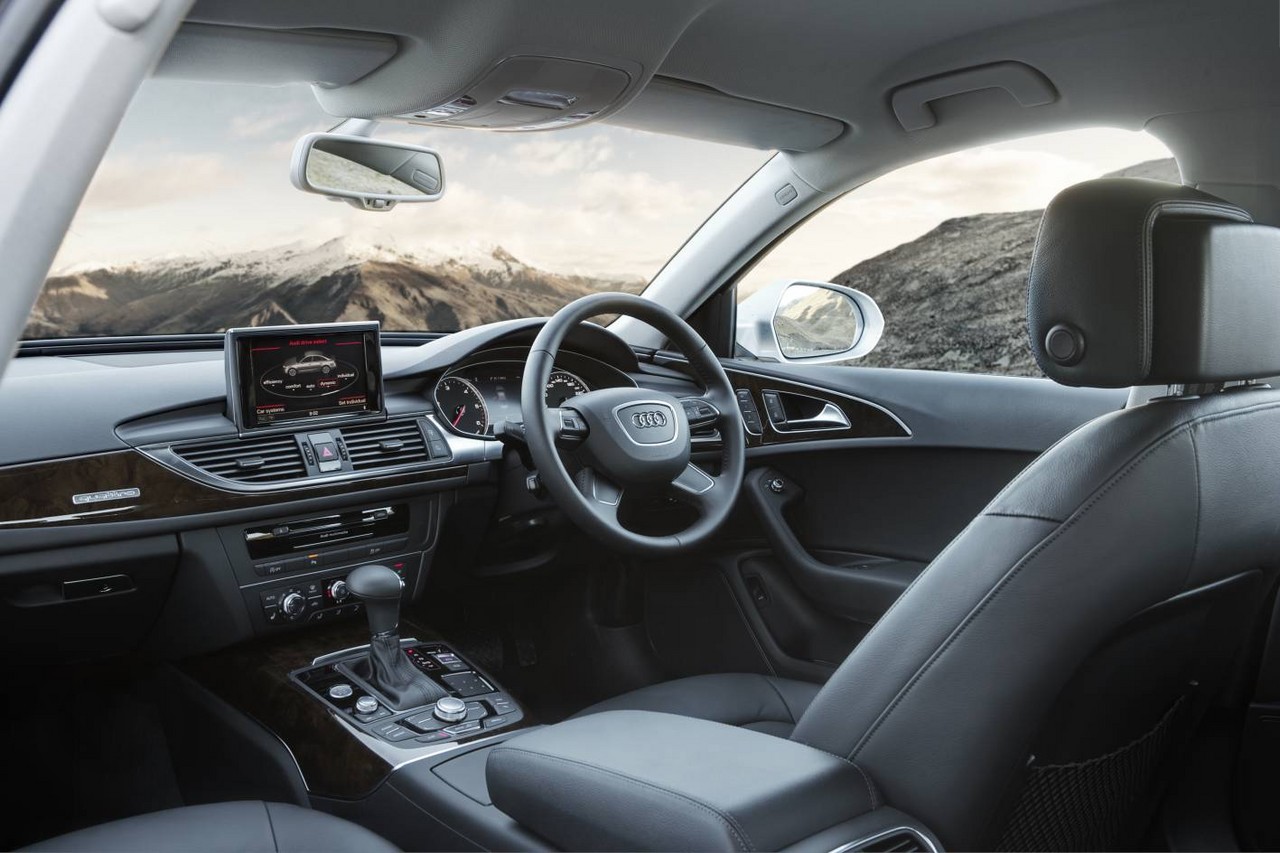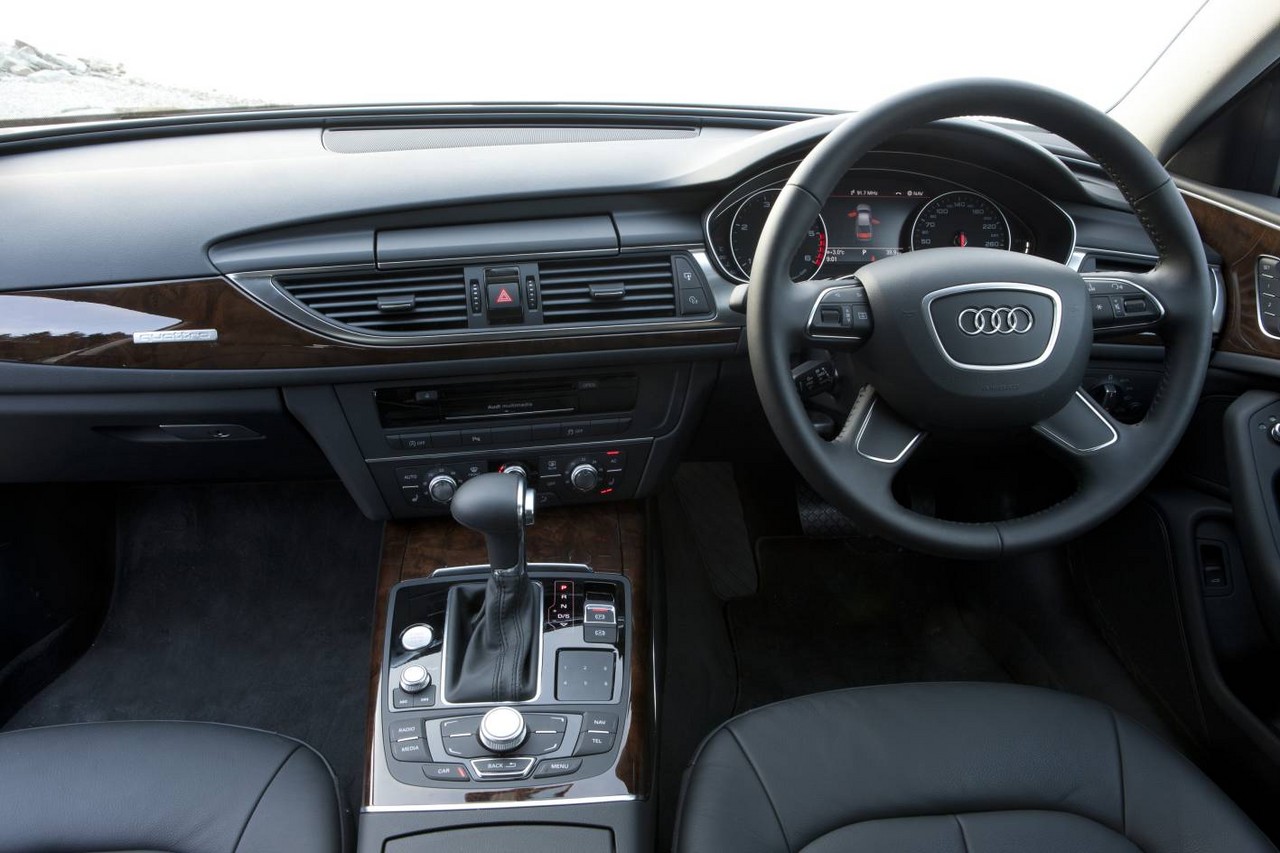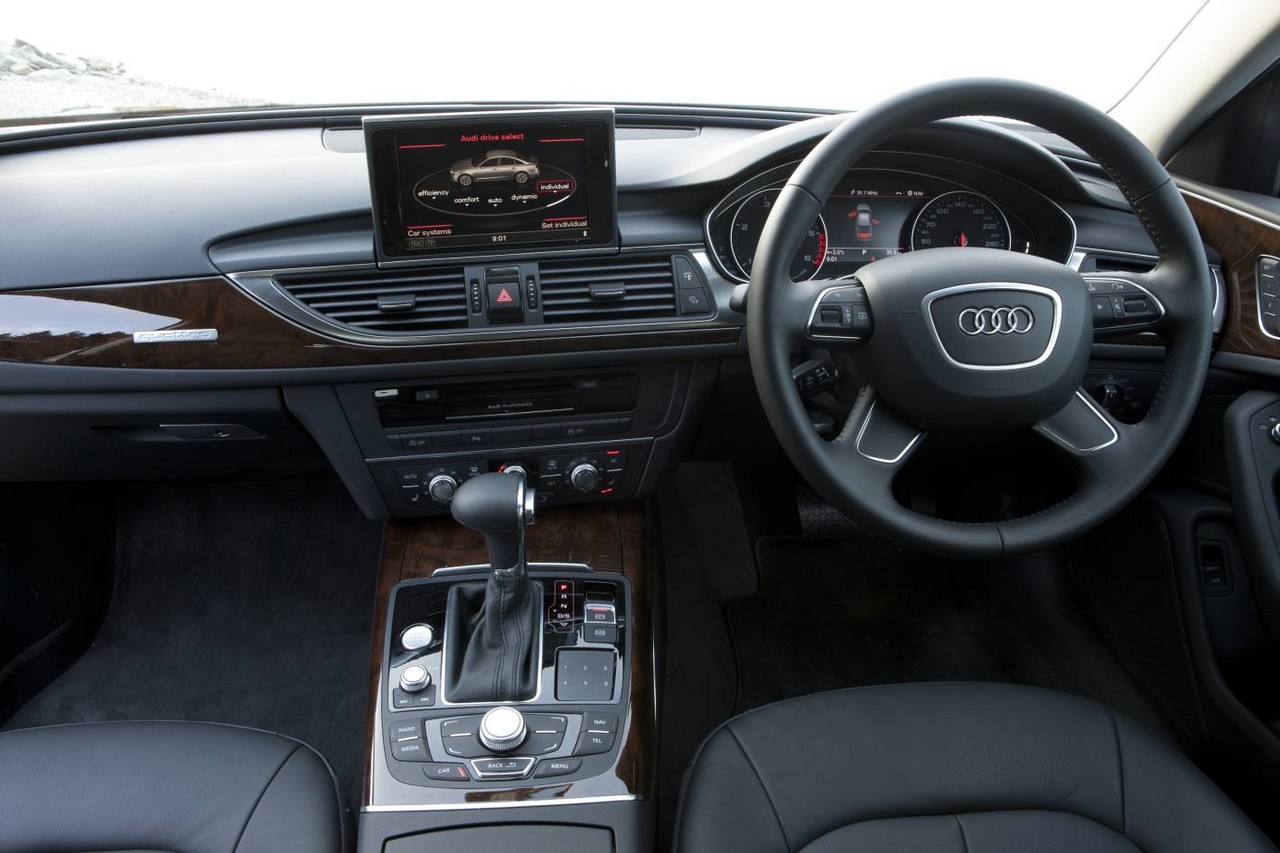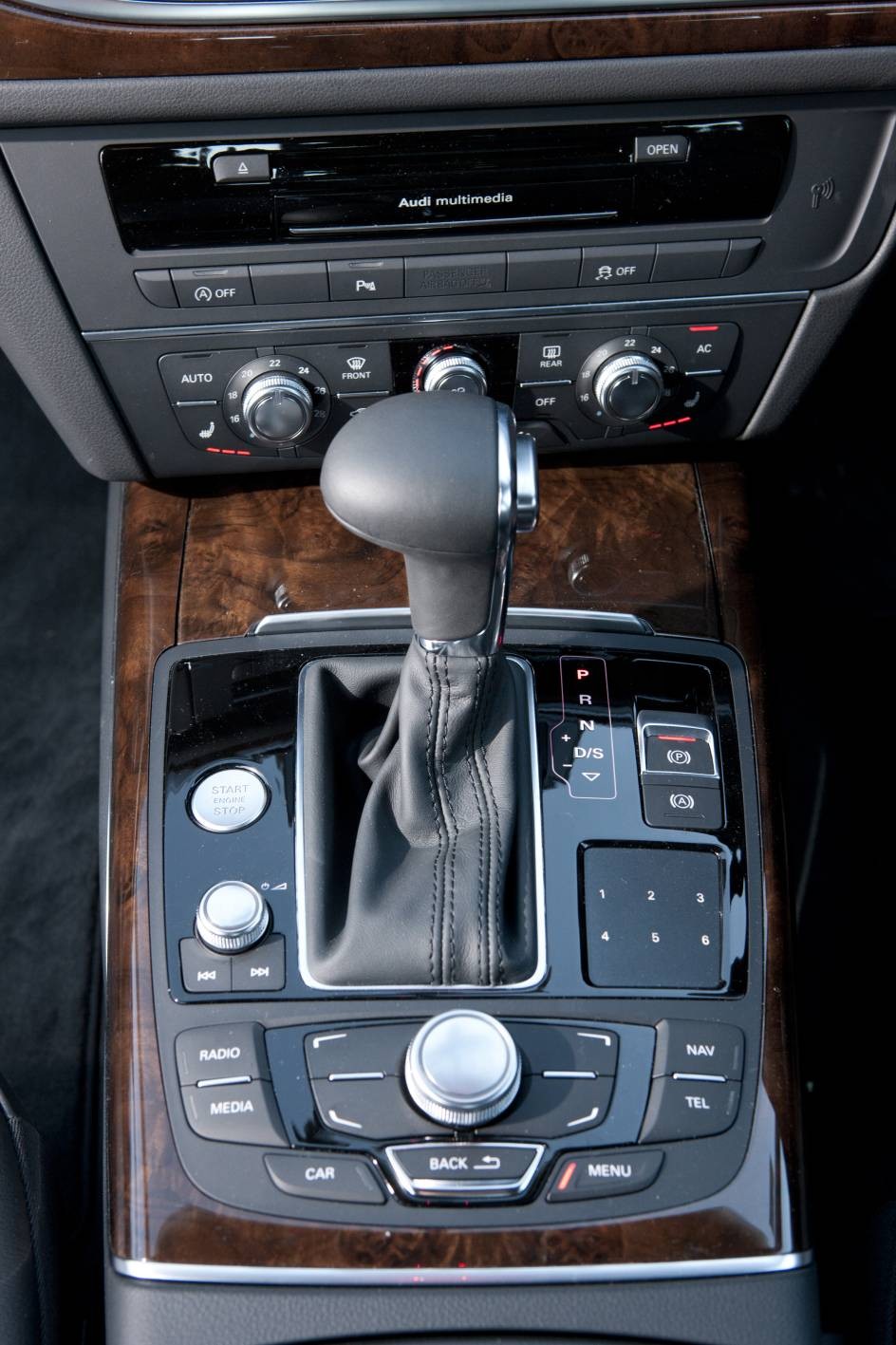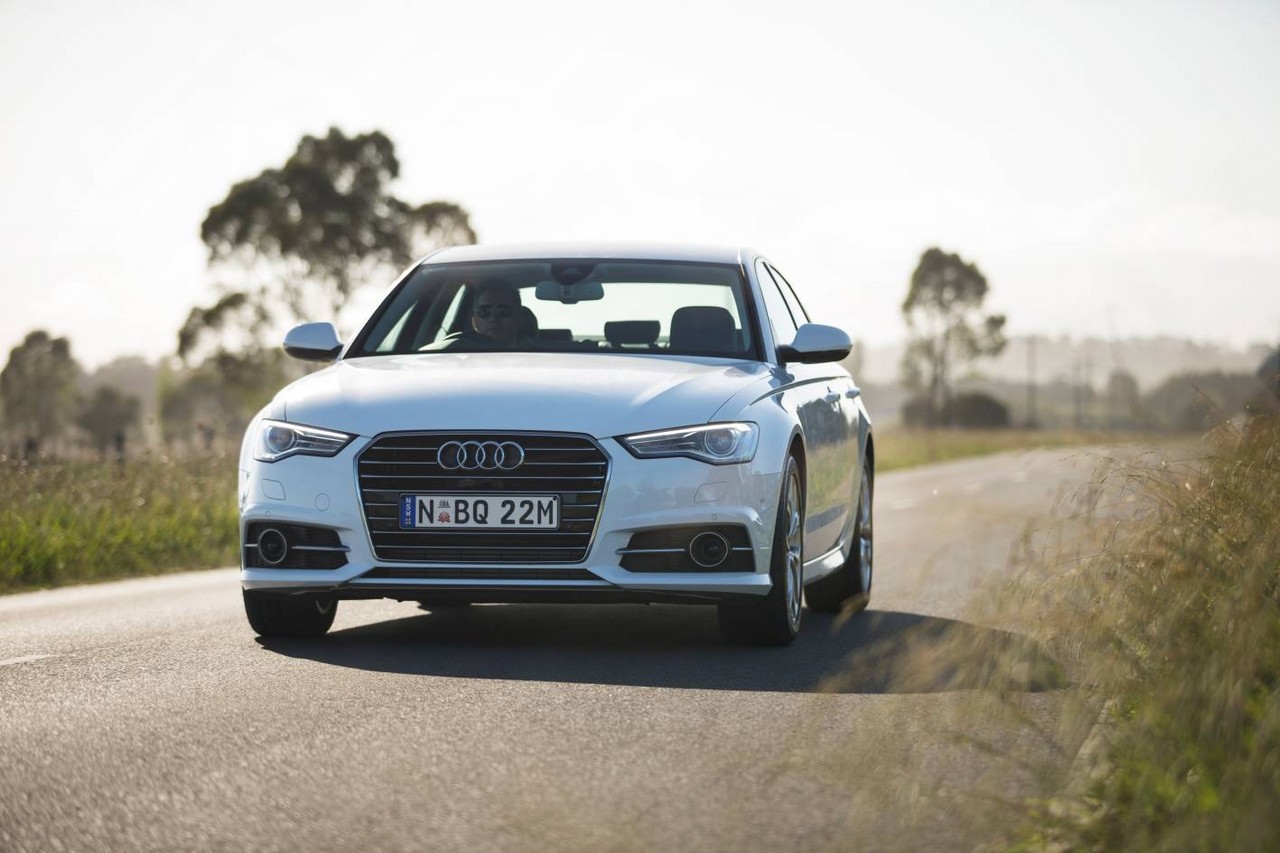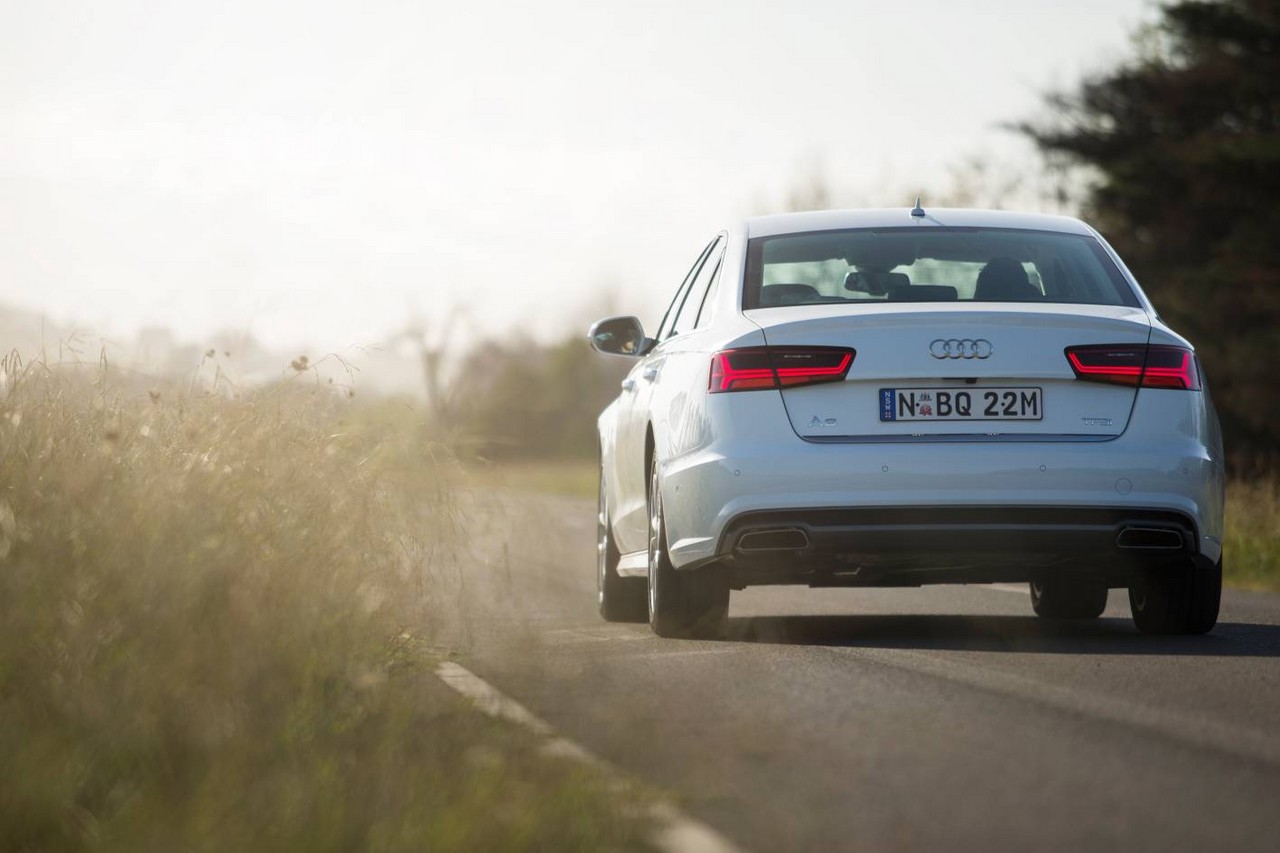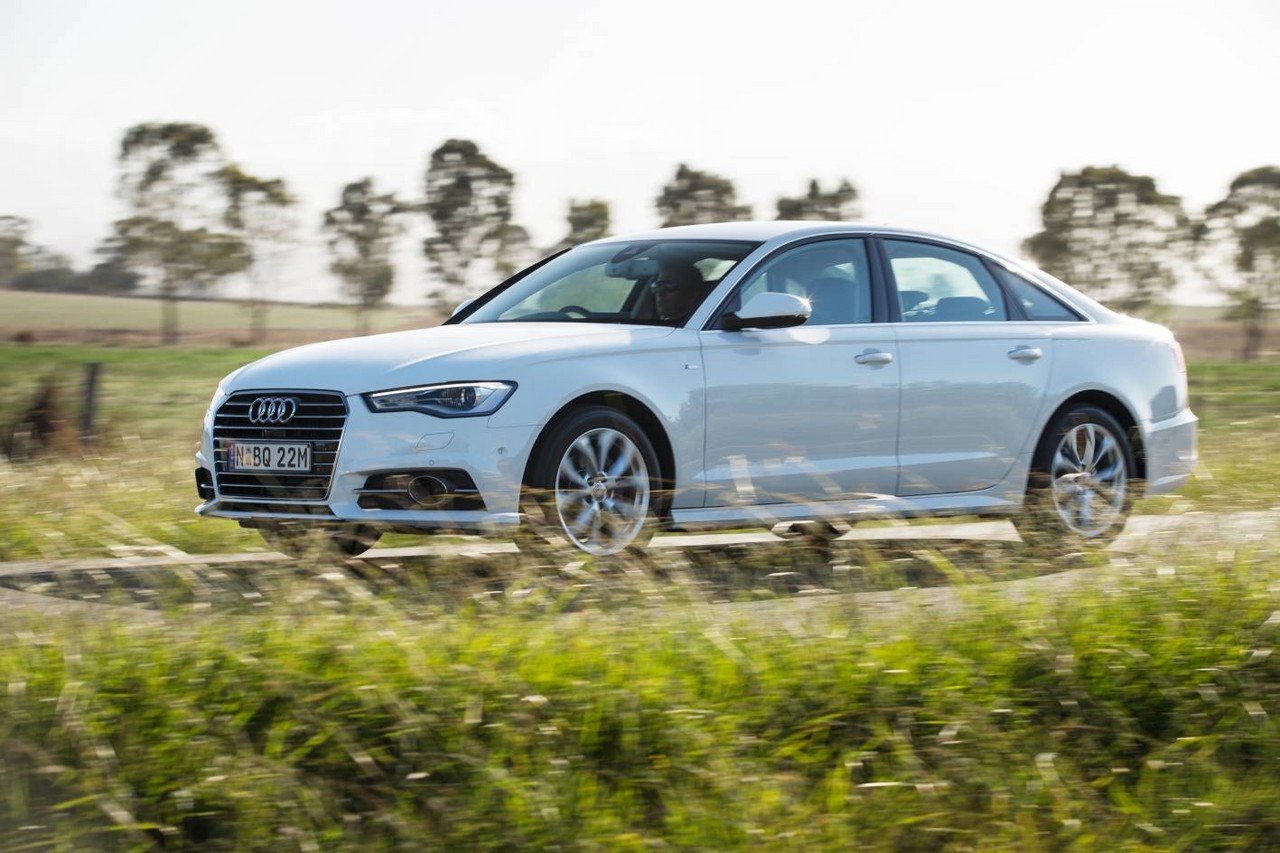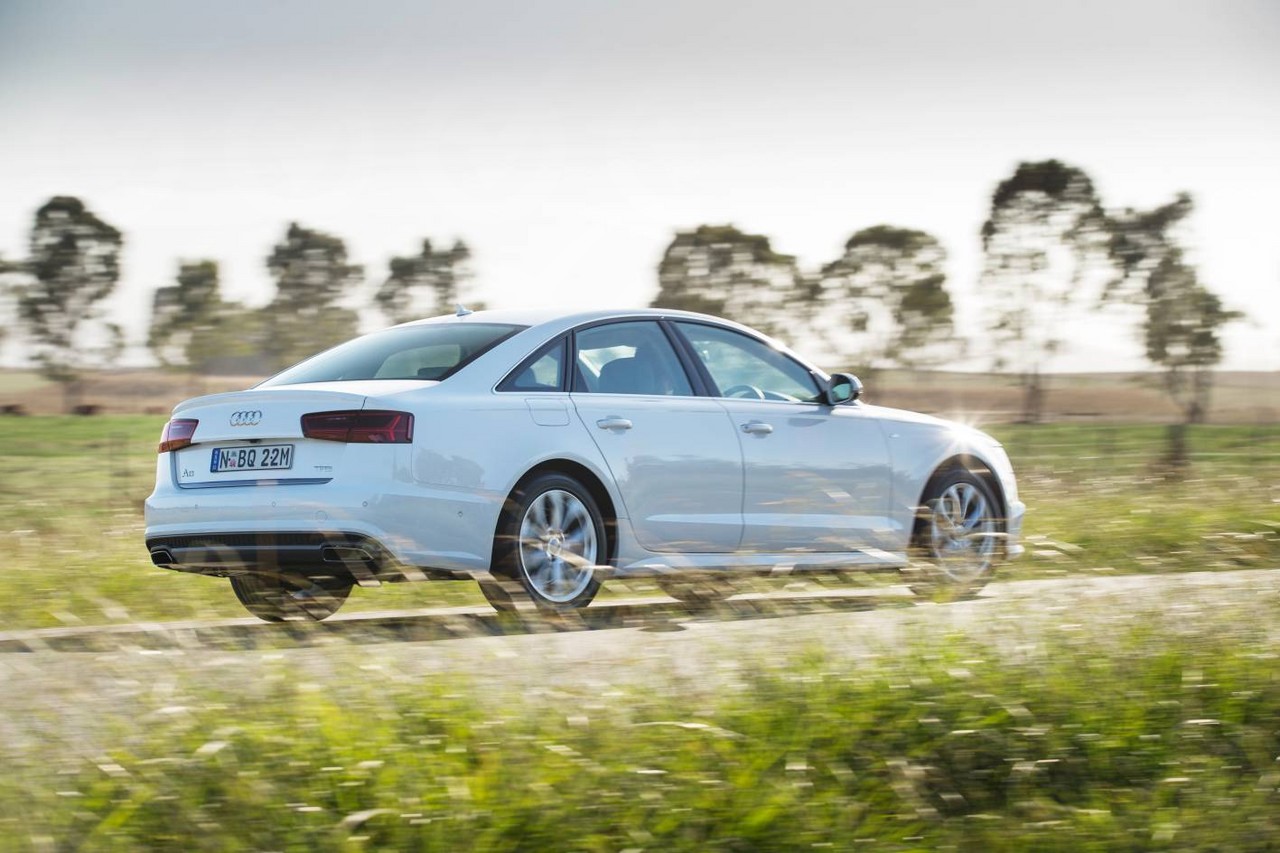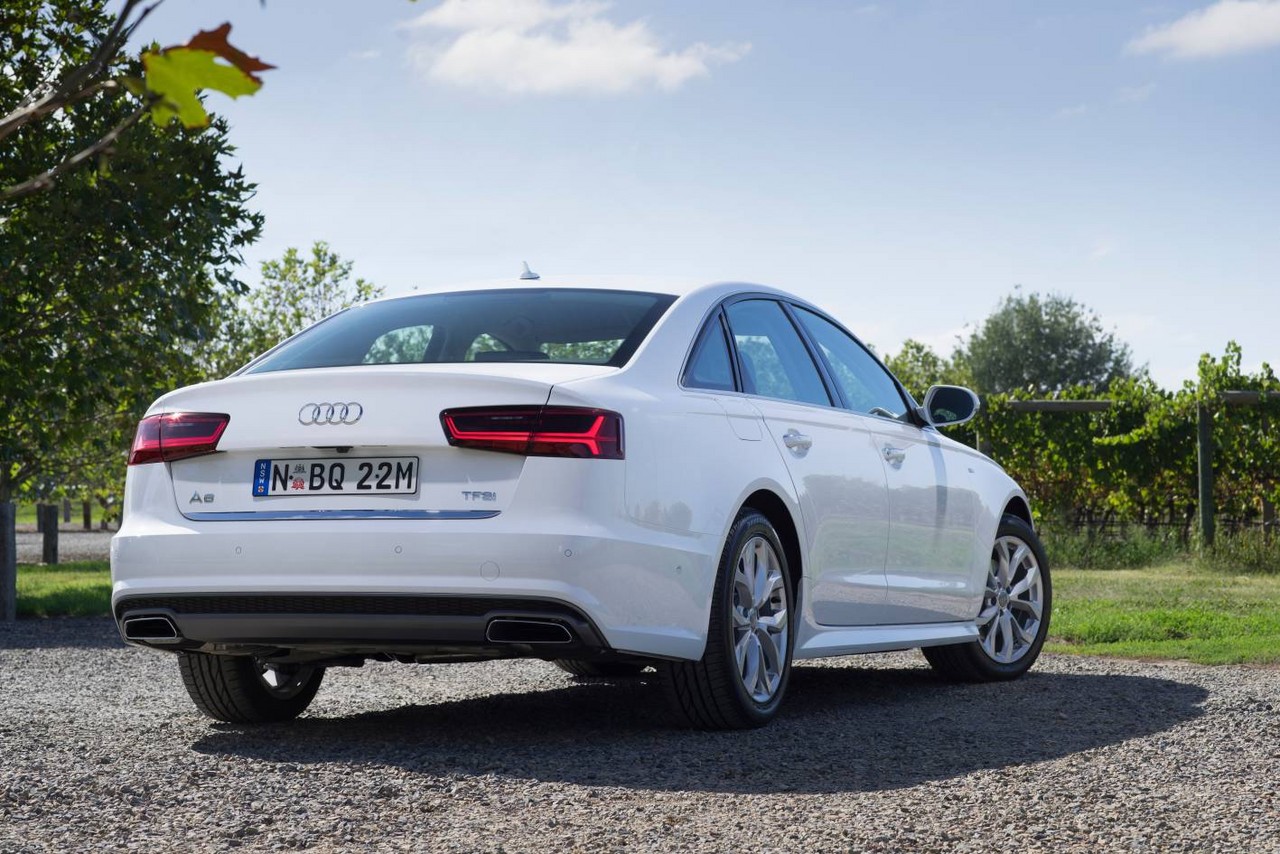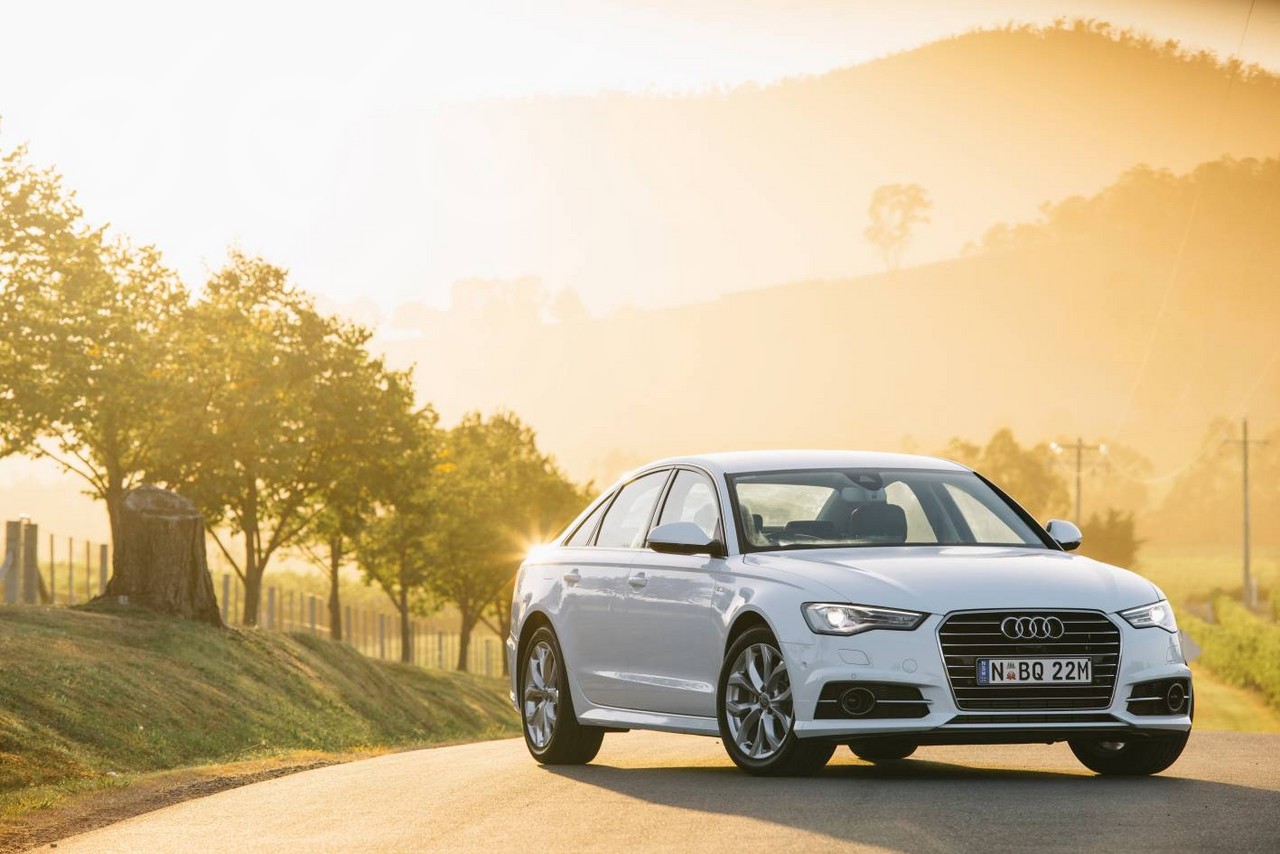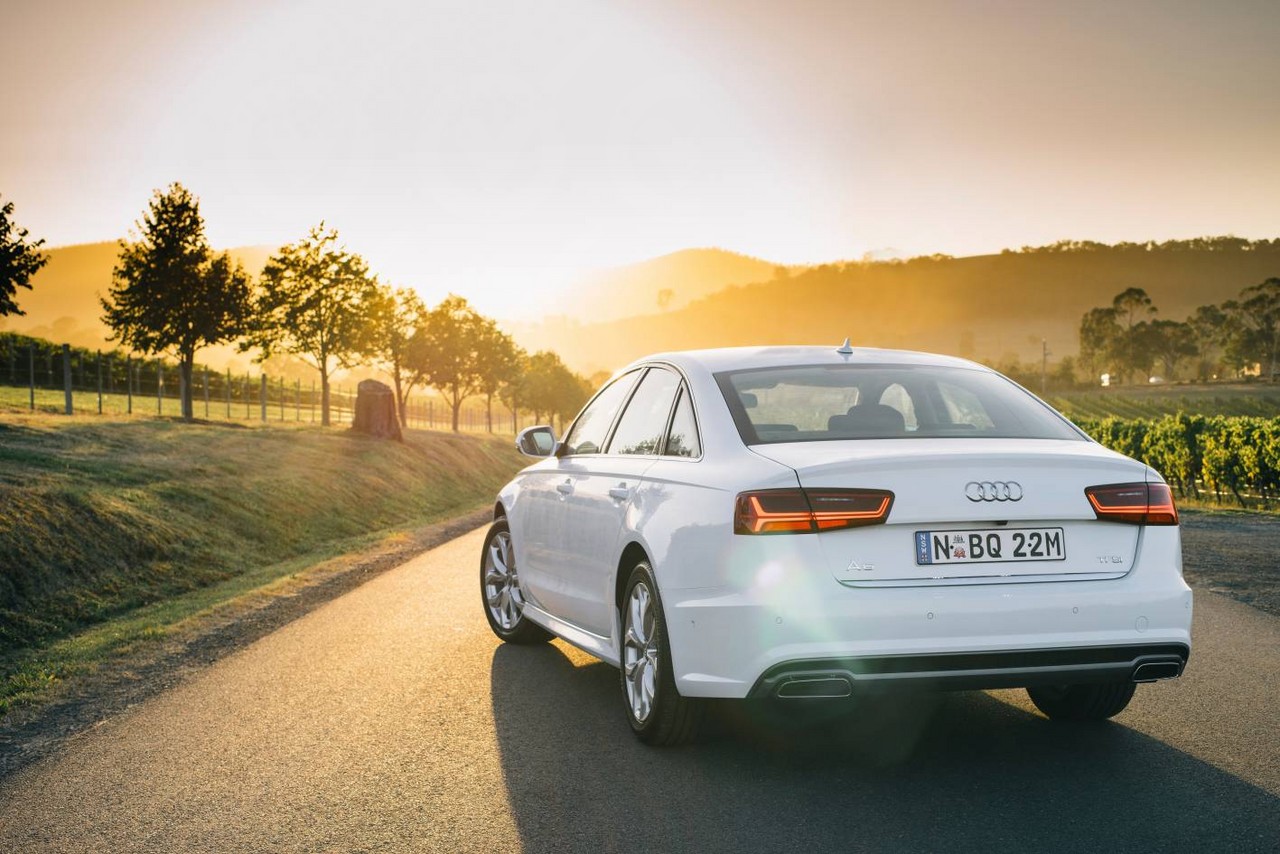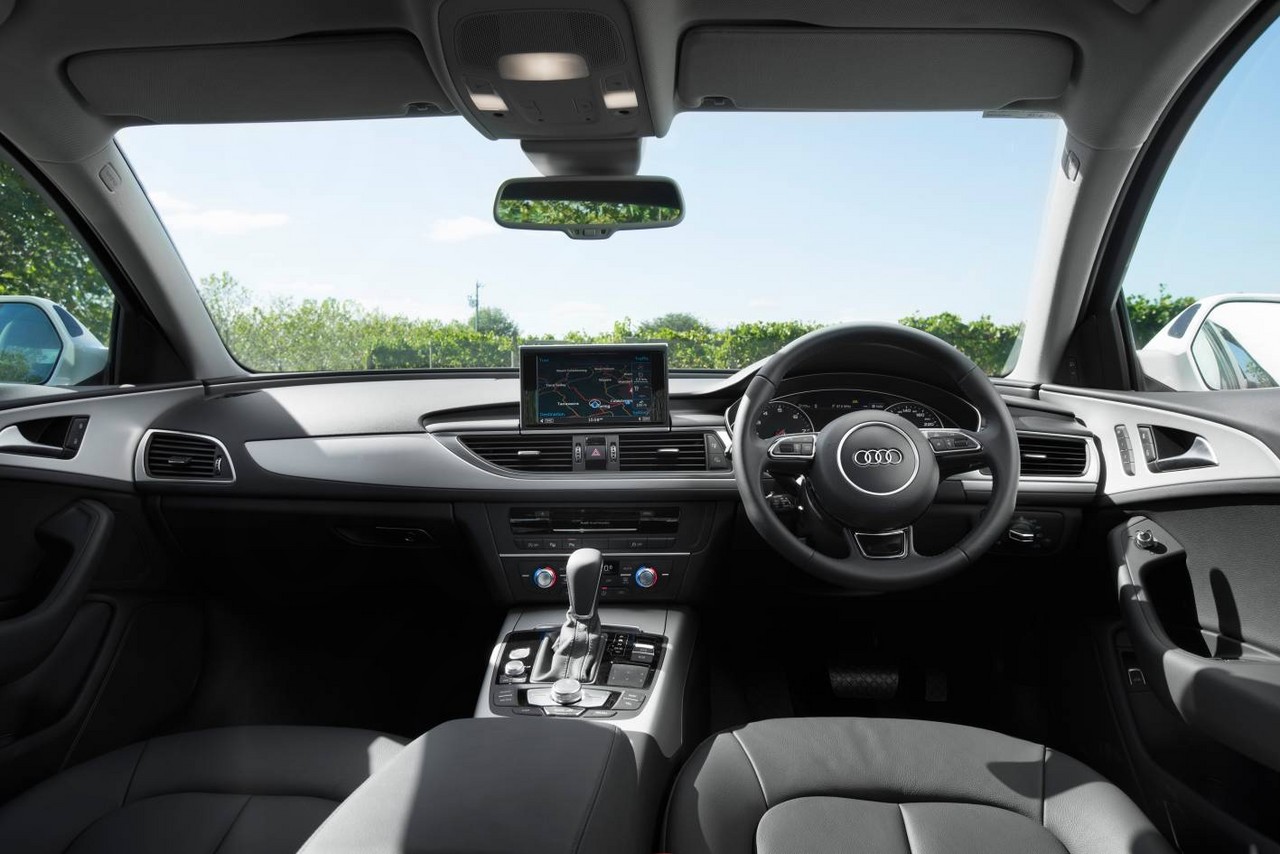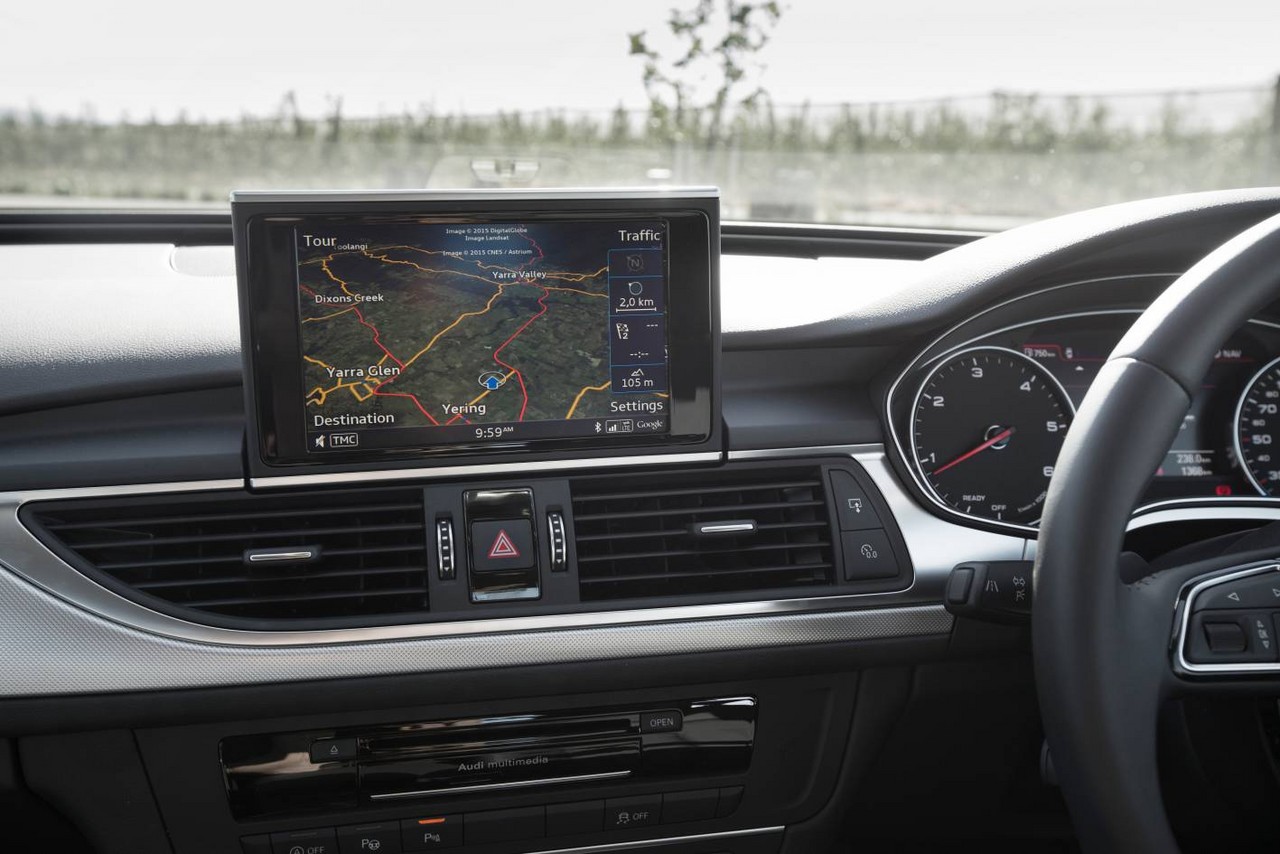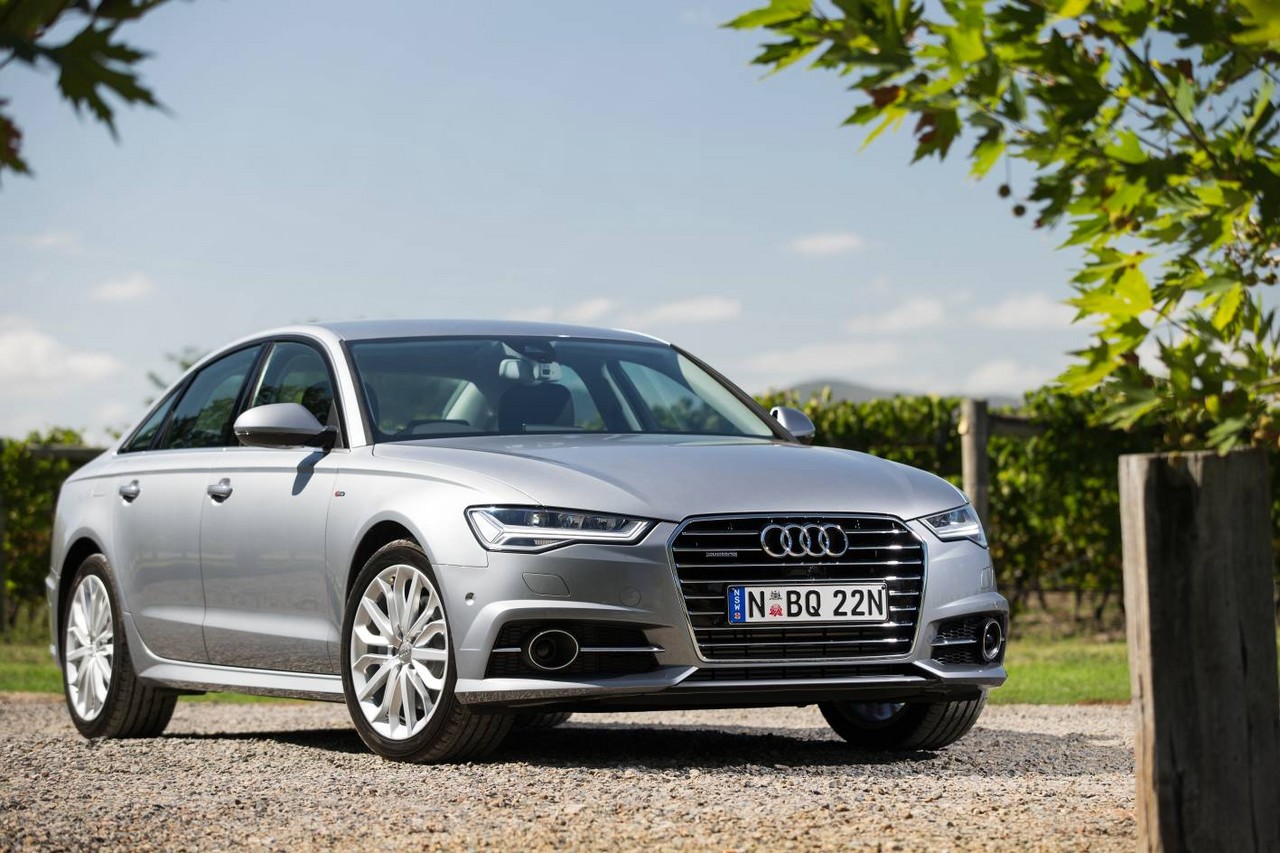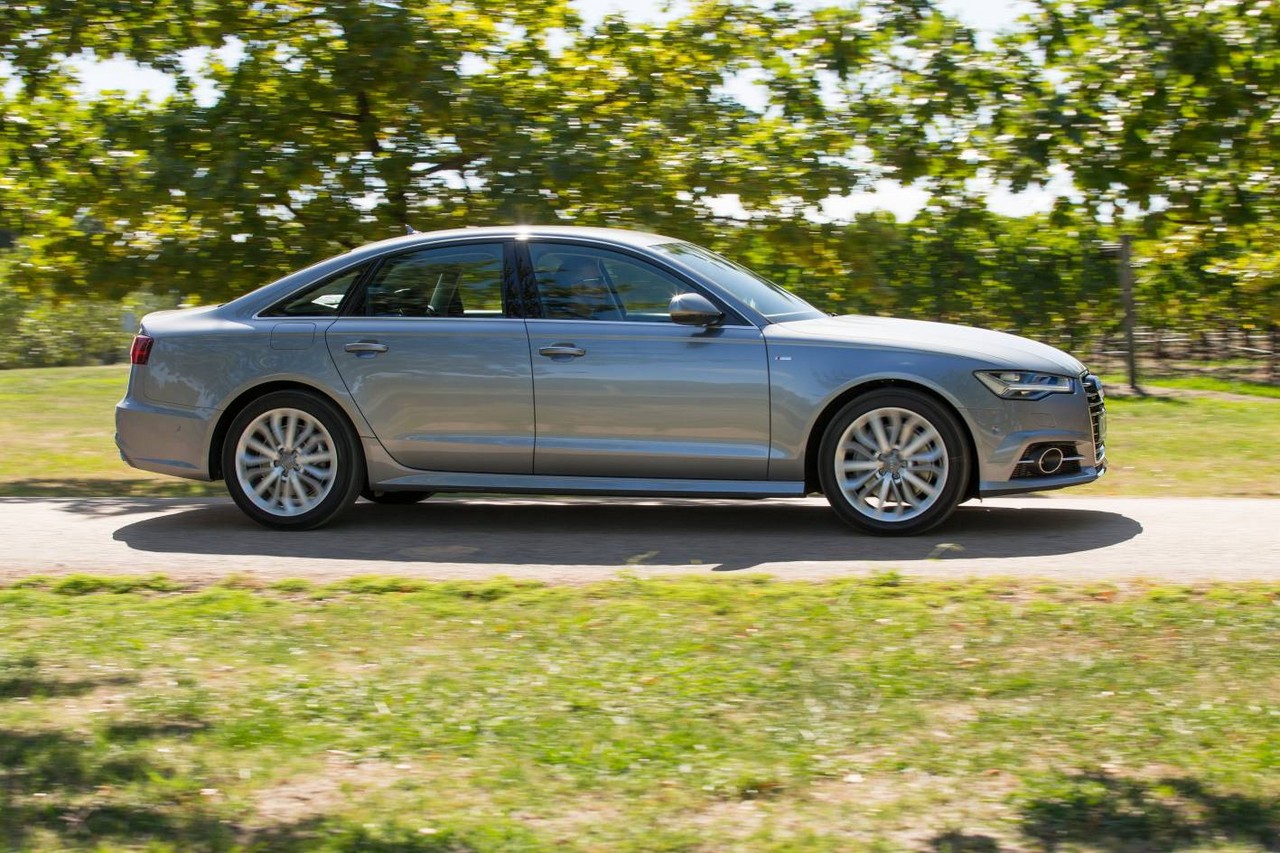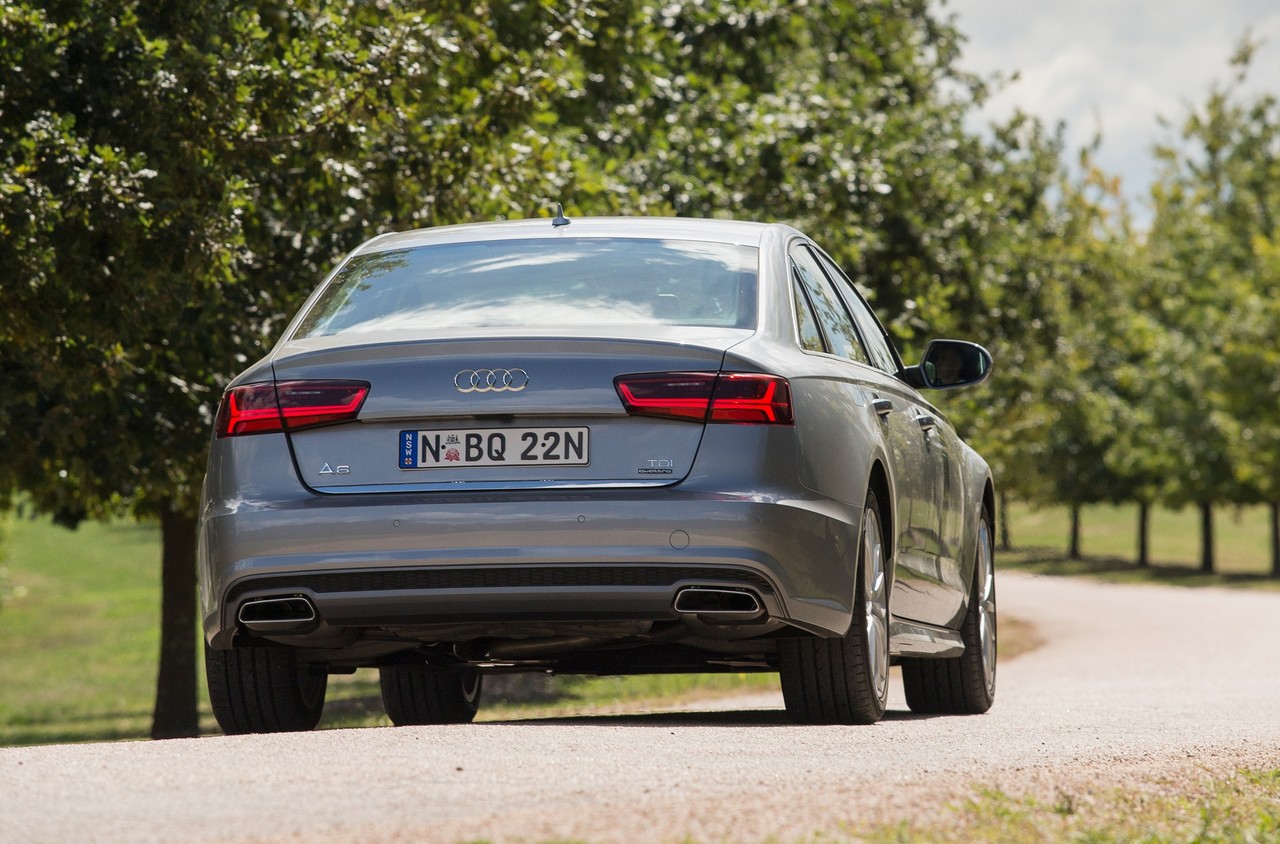
- Fuel-efficient turbo-diesel engines
- High quality interior fit and finish
- Quiet, well-insulated cabin
- quattro system provides traction for secure handling
- Steering lacks feel and feedback
- Front-wheel drive models fails to engage the driver
Review: Audi C7.I A6 and A6 Avant (2011-14)
Overview
The Audi C7 Series I (C7.I) A6 sedan was released in July 2011, with the A6 Avant (wagon) following in July 2012. Manufactured in Neckarsulm, Germany, the A6 range initially consisted of the 2.8 FSI, 3.0 TDI and 3.0 TFSI variants, all of which were fitted with a seven-speed double clutch transmission (Audi’s ‘S-Tronic’) and four-wheel ‘quattro’ drive system. Furthermore, all models were fitted with ‘idle stop’ which enabled the engine to shut down when the vehicle was stationary and a brake energy regeneration system which converted the vehicle’s kinetic energy – when braking or coasting – to recharge the battery.
In October 2011, however, the range was expanded with the introduction of the 2.0 TFSI and 2.0 TDI, powered by 2.0-litre turbocharged petrol and diesel engines, respectively; these variants subsequently formed the A6 Avant range. The 2.0 TFSI and 2.0 TDI were front-wheel drive and fitted with a continuously variable transmission (CVT) with eight pre-set gear ratios. Finally, the 3.0 TDI BiTurbo was released in February 2013.
| Variant | Years | Engine | Trans. | Peak power | Peak torque | |
|---|---|---|---|---|---|---|
| A6, A6 Avant |
2.0 TFSI | 2011-14 | 2.0-litre CDNB turbo petrol I4 | 8sp CVT | 132 kW at 4000-6000 rpm | 320 Nm at 1500-3900 rpm |
| A6, A6 Avant |
2.0 TDI | 2011-14 | 2.0-litre CGLC turbo-diesel I4 | 8sp CVT | 130 kW at 4200 rpm | 380 Nm at 1750-2500 rpm |
| A6 | 2.8 FSI quattro | 2011-14 | 2.8-litre CHV petrol V6 | 7sp DCT | 150 kW at 5250-6500 rpm | 280 Nm at 3000-5000 rpm |
| 3.0 TDI quattro | 2011-12 | 3.0-litre CDUC turbo-diesel V6 | 7sp DCT | 180 kW at 4000-4500 rpm | 500 Nm at 1400-3250 rpm | |
| 2013-14 | 3.0-litre CDUD turbo-diesel V6 | 7sp DCT | 180 kW at 4000-4500 rpm | 580 Nm at 1400-3250 rpm | ||
| 3.0 TDI BiTurbo quattro | 2013-14 | 3.0-litre CGQB twin-turbo diesel V6 | 8sp auto | 230 kW at 3900-4500 rpm | 650 Nm at 1450-2800 rpm | |
| 3.0 TFSI quattro | 2011-12 | 3.0-litre CGW supercharged petrol V6 | 7sp DCT | 220 kW at 5250-6500 rpm | 440 Nm at 2900-4500 rpm | |
| 2013-14 | 3.0-litre CTUA supercharged petrol V6 | 7sp DCT | 228 kW at 5500-6500 rpm | 440 Nm at 2900-4500 rpm |
quattro
The Audi C7 A6’s ‘quattro’ four-wheel drive system utilised an Audi-developed ‘Crown Gear’ centre differential. In normal conditions, the system provided a 40:60 front:rear torque split. If traction was lost, however, up to 85 per cent of the engine’s torque could be directed to the rear axle, and up to 70 per cent to the front axle. The system also included open front and rear differentials with electronic differential locks which could brake spinning wheels to enable cross-axle torque transfers.
Dimensions and suspension
Compared to the Audi C6 A6 , the Audi C7 A6 sedan was the same length at 4927 mm, but 19 mm wider (at 1874), 12 mm taller (1471 mm) and had a 69 mm longer wheelbase (2912 mm); compared to the sedans, the C7 A6 Avant was 6 mm taller (at 1471 mm).
The Audi C7 A6 had five-link front suspension and self-tracking trapezoidal link rear suspension (both with coil springs, gas-filled dampers and anti-roll bars).
Safety equipment
Standard safety equipment for the Audi C7 A6 included dual front airbags, front and rear side airbags, full-length curtain airbags (i.e. for front and rear occupants), ABS, electronic brake force distribution, brake assist, electronic stability control, traction control and front seatbelts with pretensioners and load limiters.
Euro NCAP testing
In Euro NCAP testing , a 2011 Audi A6 2.0 TDI received a five star safety rating which included a 91 per cent adult occupant protection rating and an 83 per cent child occupant protection rating. In the offset crash test, there was a slight risk of serious chest and leg injury for the driver. In the side impact test, one point was deducted because the driver door unlatched. Under ANCAP’s methodology, this testing resulted in a five star adult occupant protection rating with a score of 34.91 out of 37.
Features: Audi C7 A6
Standard features for the Audi C7 A6 2.0 TFSI and 2.0 TDI included 17-inch alloy wheels, a ten speaker stereo with CD player, MP3/WMA-compatibility and auxiliary inputs, Multi Media Interface (Audi’s ‘MMI’) with an eight-inch colour touch screen and hard-drive navigation, dual zone climate control air conditioning, leather upholstery, power adjustable front seats, cruise control, Bluetooth connectivity, front and rear parking sensors, automatic headlights, rain-sensing wipers, split and folding rear seats, remote central locking with proximity key, power windows and heated mirrors, an electromechanical parking brake, cargo net, driver memory settings (seats and mirrors), a 12 volt power outlet, tyre pressure monitoring, a trip computer and an immobiliser.
The A6 2.8 FSI was further equipped with 18-inch alloy wheels, directional bi-xenon headlights with LED running lights and washers, steering wheel gearshift paddles and a power sunroof.
Beyond this, the Audi A6 3.0 TDI, 3.0 TFSI and 3.0 TDI BiTurbo variants added a fourteen speaker, 600 watt Bose stereo with a 12-channel digital sound processing amplifier and a reversing camera with park assist display.
2013: A6 updates
For 2013, all six-cylinder Audi A6 sedan models (i.e. the 2.8 FSI, 3.0 TDI and 3.0 TFSI) were fitted with a rear-view camera as standard, while an extra-cost Technik package was introduced for the 2.8 FSI and 3.0 TDI which included a 360 degree top-view camera, LED headlights with high-beam assist, four-zone climate control air conditioning and a power-operated glass sunroof. Power and torque outputs were also increased for the 3.0 TFSI and 3.0 TDI, respectively.
November 2013 updates
In November 2013, standard features for the Audi C7 A6 were extended to include 18-inch alloy wheels, xenon headlights and Audi’s ‘Parking System Plus’ which included front and rear parking sensors and a rear-view camera.
The ‘S line’ exterior package was also fitted as standard across the range – it included unique bumpers (front and rear), side ventilation grilles and side sills, a platinum grey-painted rear diffuser insert, ‘S line’ badging on the front wings and a chrome-plated exhaust finisher.
For the six-cylinder variants (i.e. the 2.8 FSI, 3.0 TDI, 3.0 TFSI and 3.0 TDI Biturbo), standard features were extended to include 19-inch alloy wheels and four-zone climate control air conditioning.
Changes were also made to the optional Technik packages:
- For the 2.0 TDI and 2.0 TFSI, the Technik package include Audi active lane and side assist (i.e. lane departure warning and blindspot monitoring), Audi parking system plus with 360 degree camera, digital radio (DAB+), power folding door mirrors with memory function, four-zone climate control air conditioning, sports steering wheel with gearshift paddles;
- Since four-zone climate control air conditioning and steering wheel gearshift paddles were already standard for the six cylinder models, the Technik pacakge for the 2.8 FSI quattro and 3.0 TDI quattro further included LED headlights and a power-operated glass sunroof; and,
- Similarly, the Technik package for the 3.0 TFSI quattro and 3.0 TDI Biturbo quattro did not include a power-operated glass sunroof since it was already fitted as standard.
Related links
- Press Kit: Audi C7 A6 Sedan (July 2011)
- Specifications: Audi C7 A6 Sedan (July 2011)
- Press Kit: Audi C7 A6 Avant (June 2012)
- Specifications: Audi C7 A6 Avant (June 2012)
Review: Audi C7.II A6 (2015-18)
Overview
Released in Australia in March 2015, the C7 Series II (C7.II) A6 introduced new Euro 6 emissions compliant engines and new transmissions (see table below). Visually, the C7.II A6 could be identified by its revised headlights, single frame grille, air inlets, bumpers, side sills, rear lights and tailpipes.
| Variant | Engine | Trans. | Peak power | Peak torque |
|---|---|---|---|---|
| 1.8 TFSI | 1.8-litre CTGA turbo petrol I4 | 6sp man., 7sp DCT |
140 kW at 4200-6200 rpm | 320 Nm at 1400-4100 rpm |
| 3.0 TDI quattro | 3.0-litre CRTE turbo-diesel V6 | 7sp DCT | 160 kW at 3250-4500 rpm | 500 Nm at 1250-3000 rpm |
| 3.0 TDI Biturbo quattro | 3.0-litre CGQB biturbo diesel V6 | 8sp auto | 235 kW at 3900-4600 rpm | 650 Nm at 1400-2800 rpm |
Safety equipment
For the Audi C7.II A6, standard safety equipment was extended to include:
- Audi side assist: used two radar sensors to monitor the area 70 metres behind the vehicle during lane change manoeuvres at speeds over 30 km/h. If there was a vehicle in the driver’s blind spot or an approaching vehicle was detected, the driver would be alerted by a warning LED in the respective door mirror. If the driver activated the turn signal, the LED would flash several times at high frequency; and,
- Audi pre sense rear: if a rear-end collision was anticipated, the seats would be moved into the safest position for a collision.
The A6 3.0 TDI and 3.0 TDI Biturbo were further equipped with Audi’s ‘active lane assist’. Operating at speeds in excess of 65 km/h, ‘active lane assist’ used a video camera to detect lane markings. If the vehicle approached a lane marking without indicating, the steering system would make automatic adjustments to keep the vehicle in its lane. The steering wheel could also be set to vibrate to warn the driver.
Features
Standard features for the Audi C7.II A6 1.8 TFSI were extended to include Audi’s ‘MMI navigation plus’ with MMI touch (including live traffic updates, MMI radio, CD/DVD player, auxiliary inputs (3.5 mm/SDXC card readers/USB), Audi Music Interface and 10GB flash memory) and steering wheel gearshift paddles.
Compared to the 1.8 TFSI, the A6 3.0 TDI was further equipped with four-zone climate control air conditioning and LED headlights.
The range-topping 3.0 TDI Biturbo was distinguished by its 600 watt Bose surround sound system with 14 speakers and a twelve-channel digital sound processing (DSP) amplifier, and glass sunroof.
Related links
- Specifications: Audi C7.II A6 (March 2015)
- Specifications: Audi C7.II A6 Sedan and A6 allroad (September 2016)
- Technical Data: Audi C7.II A6 1.8 TFSI (March 2015)
- Technical Data: Audi C7.II A6 3.0 TDI (March 2015)
- Technical Data: Audi C7.II A6 3.0 TDI Biturbo (March 2015)
- Press Kit: Audi C7.II A6 and S6 (March 2015)
- Audi Australia: Audi A6
- Wikipedia.org: Audi C7 A6
